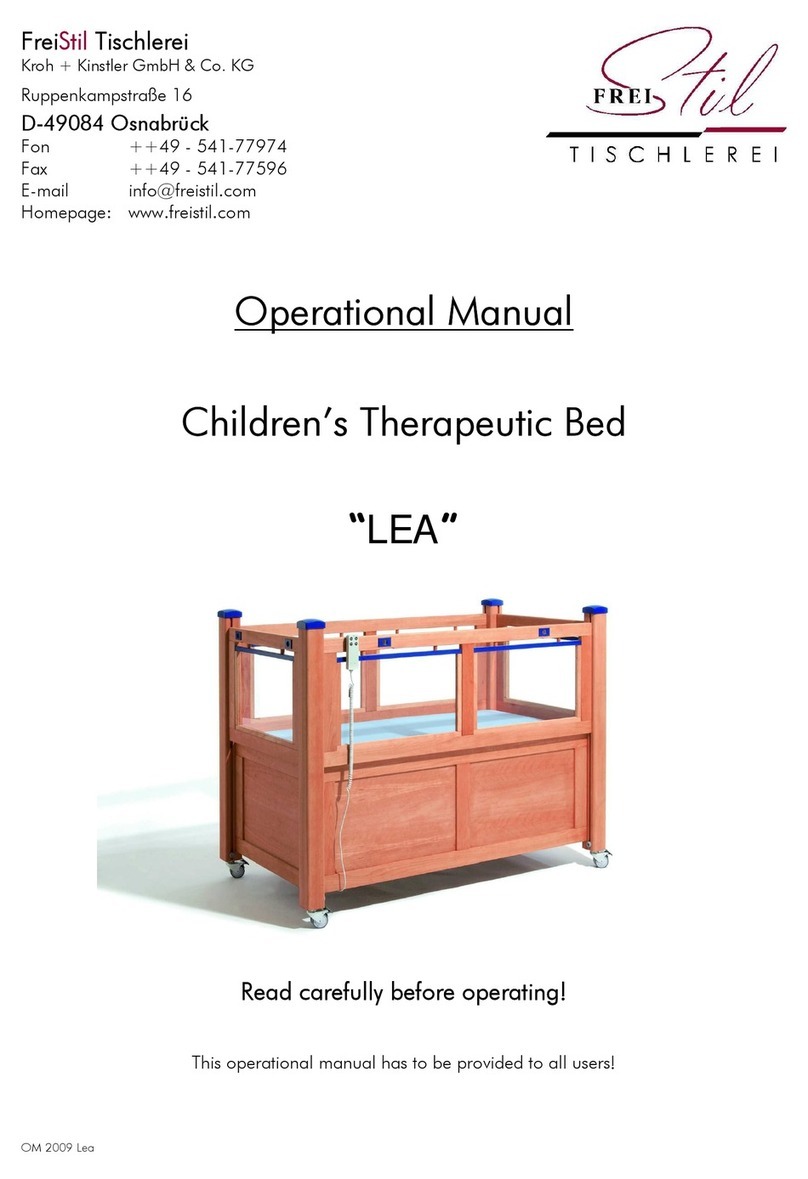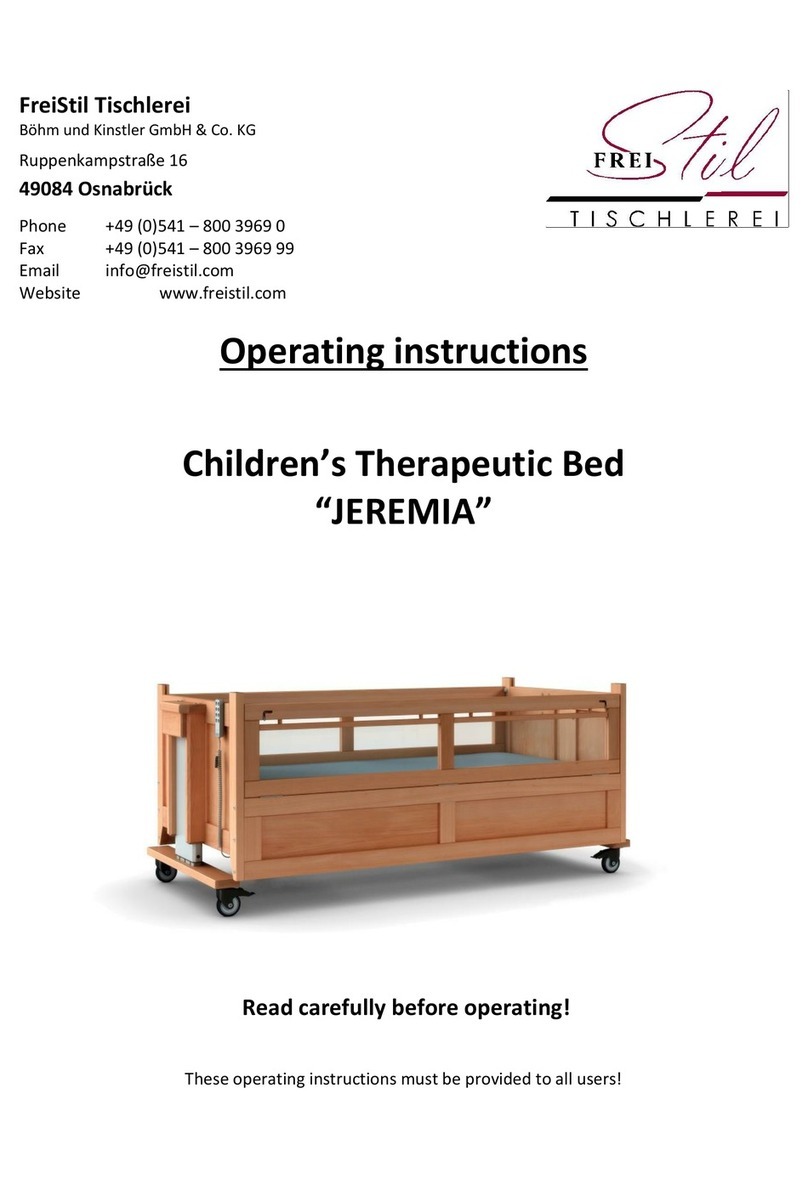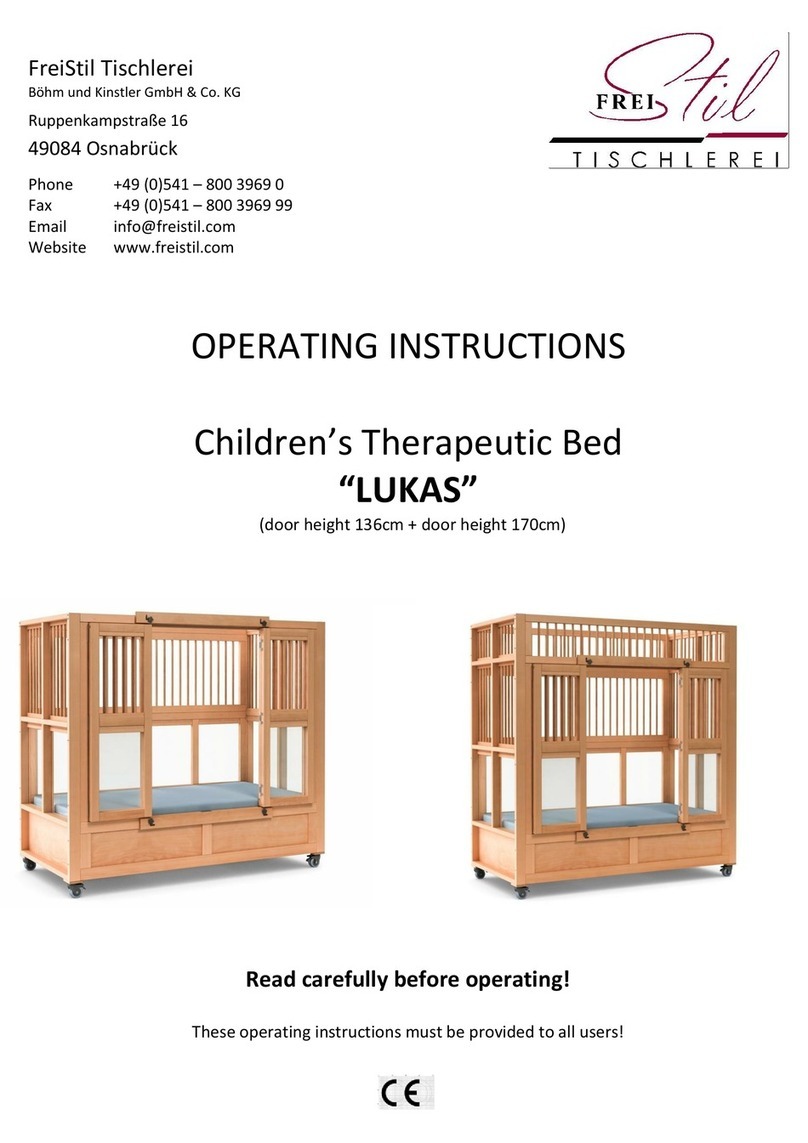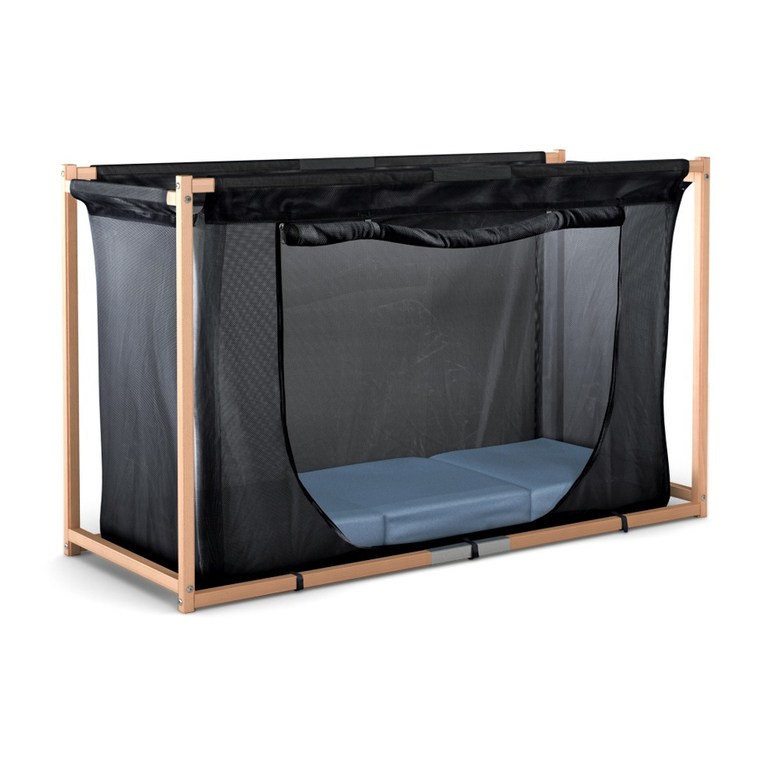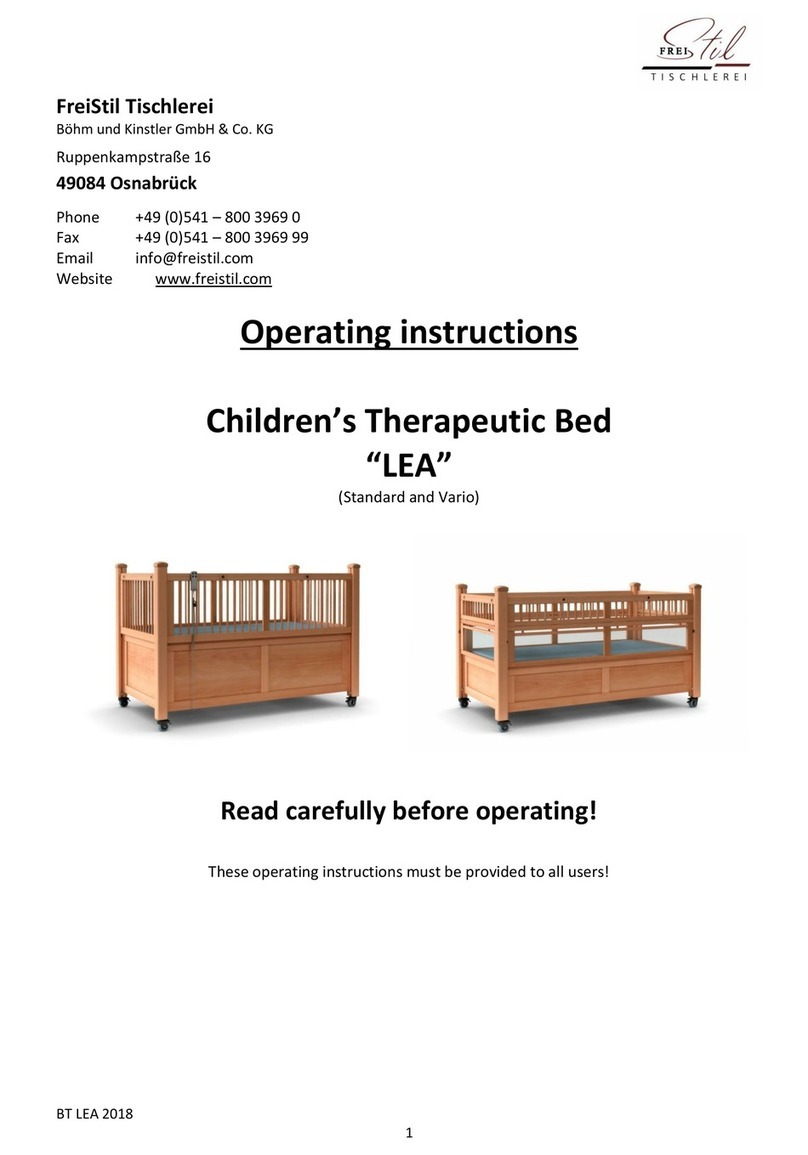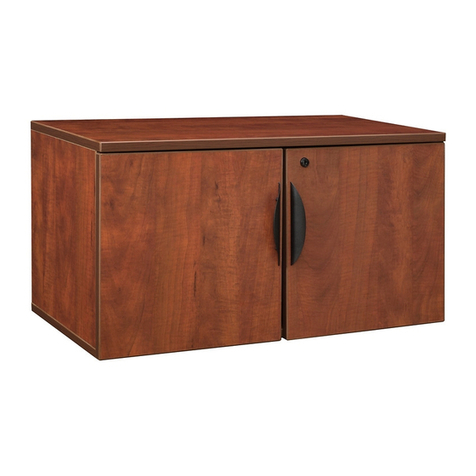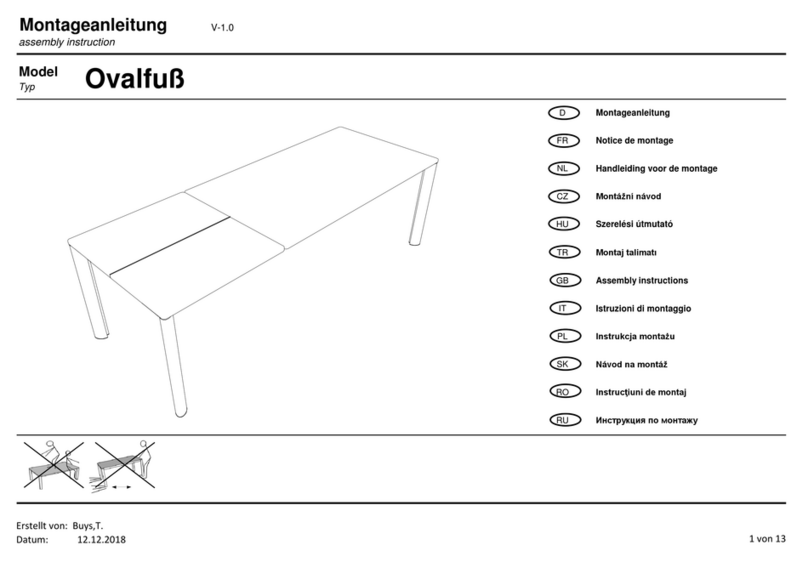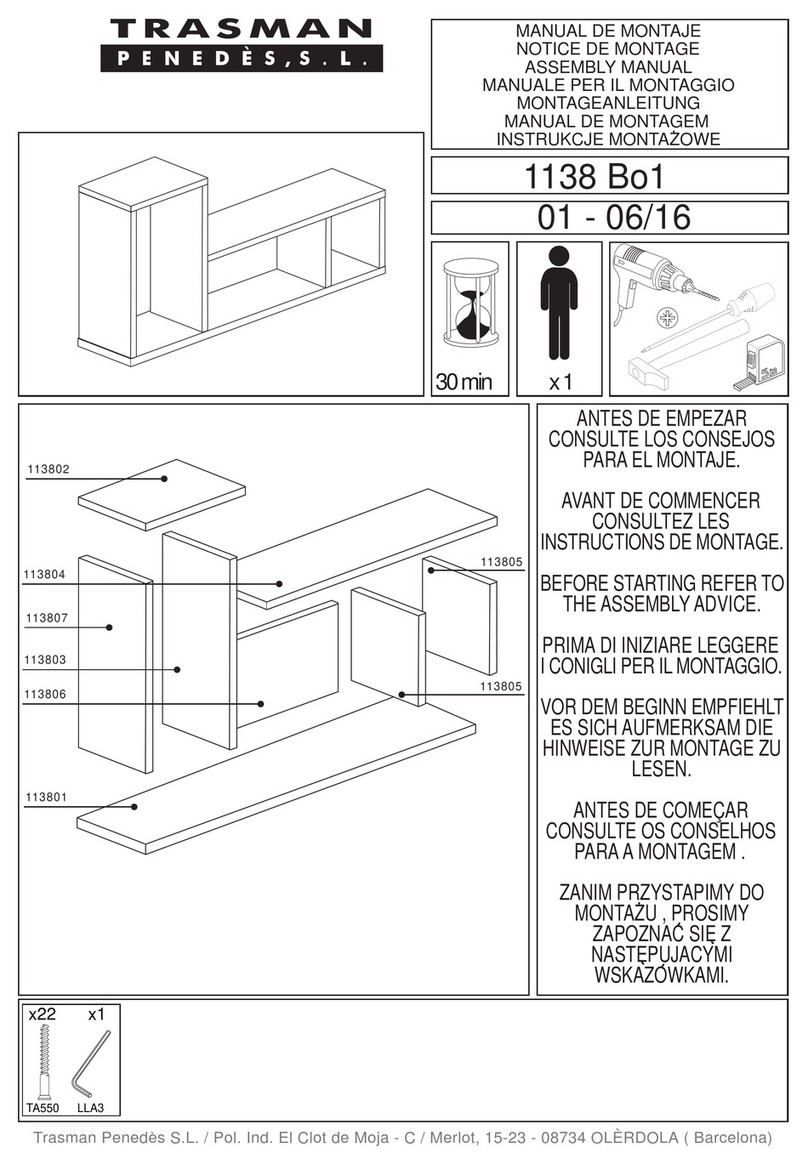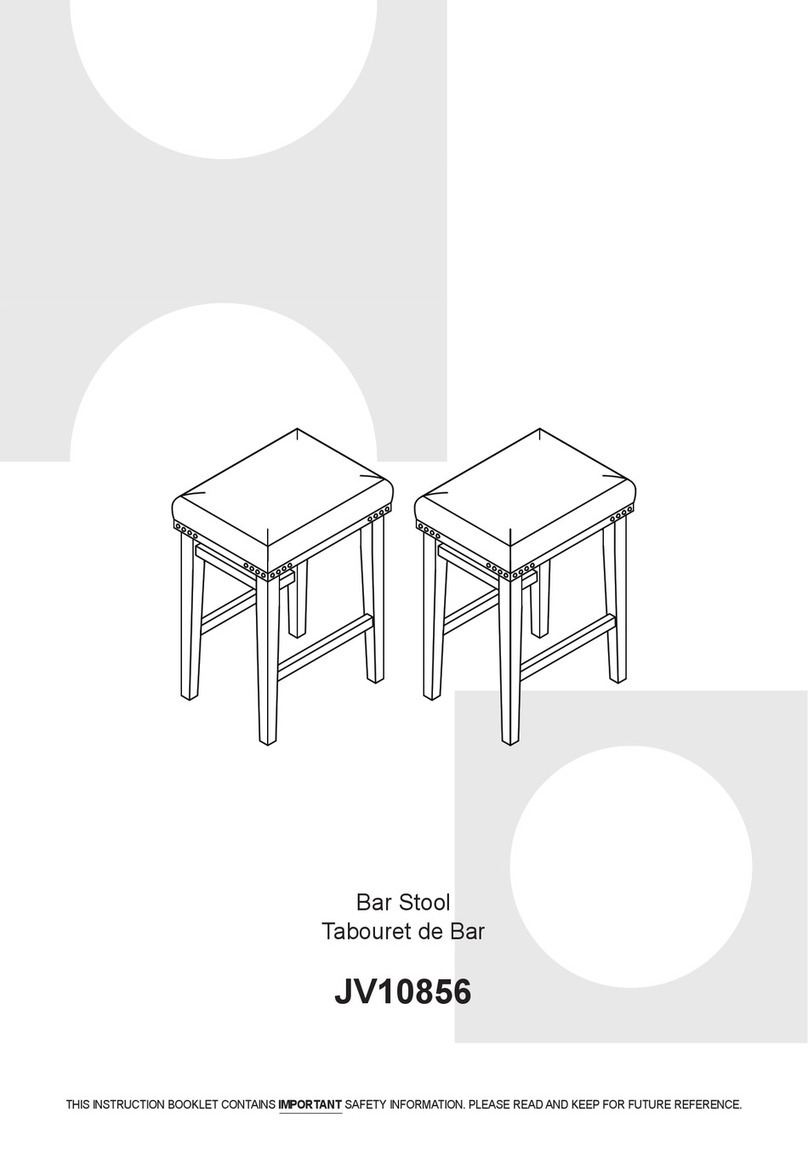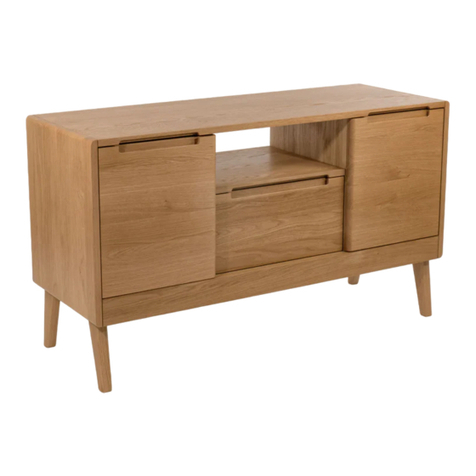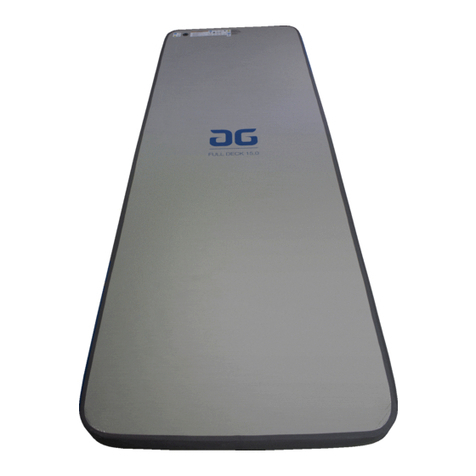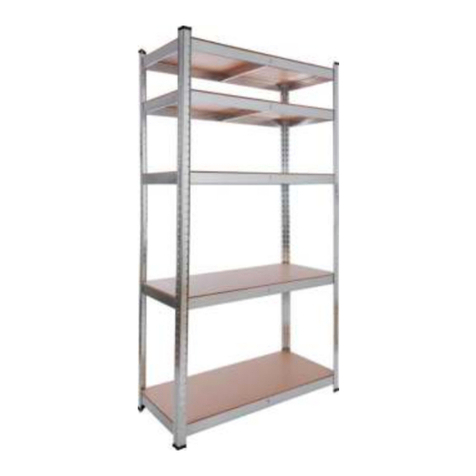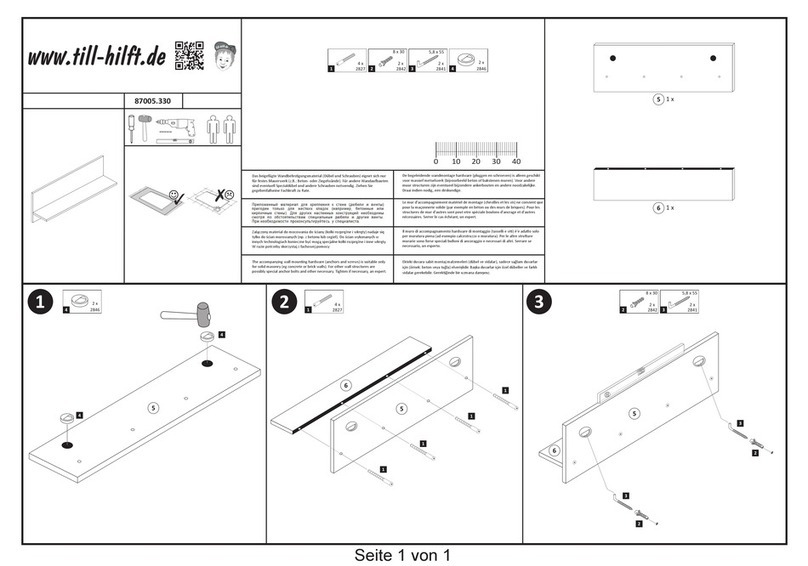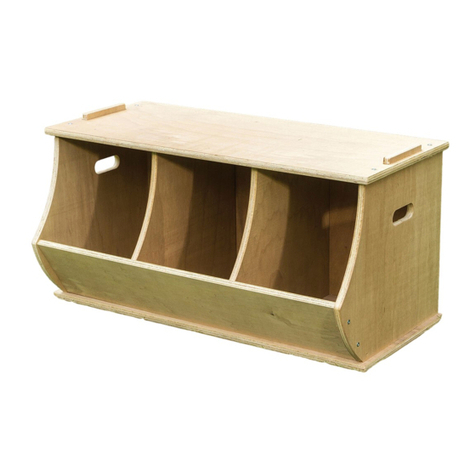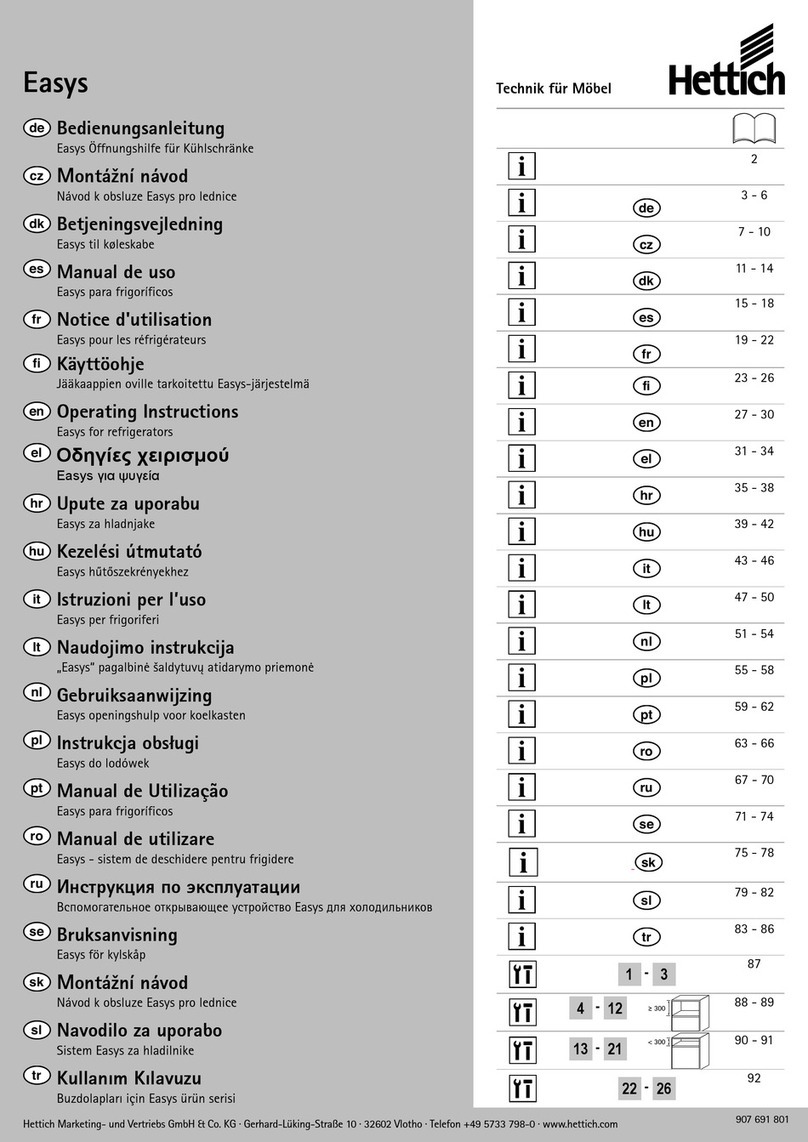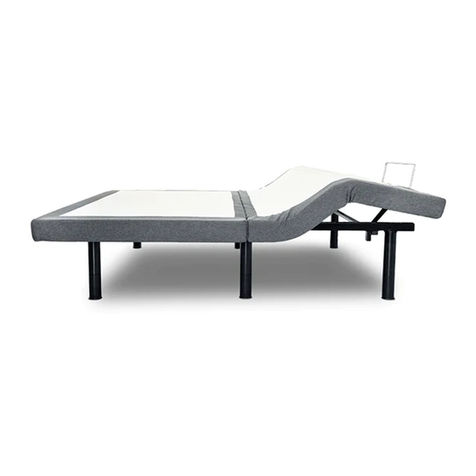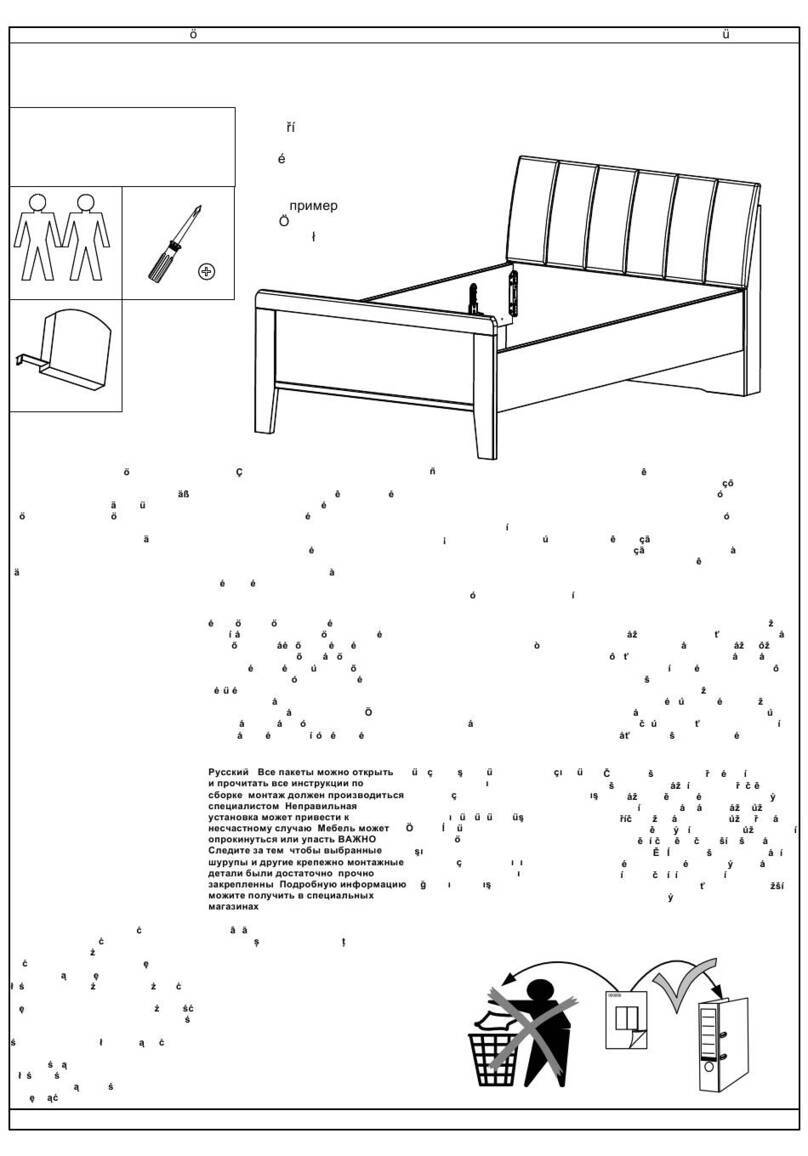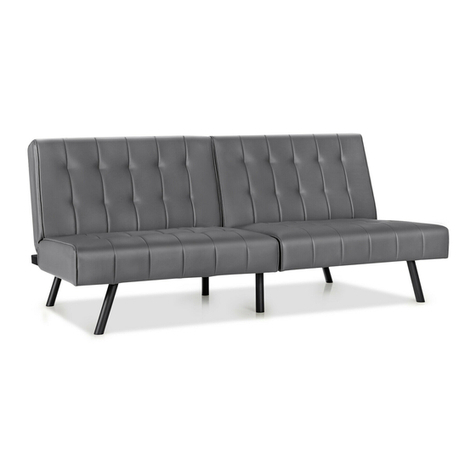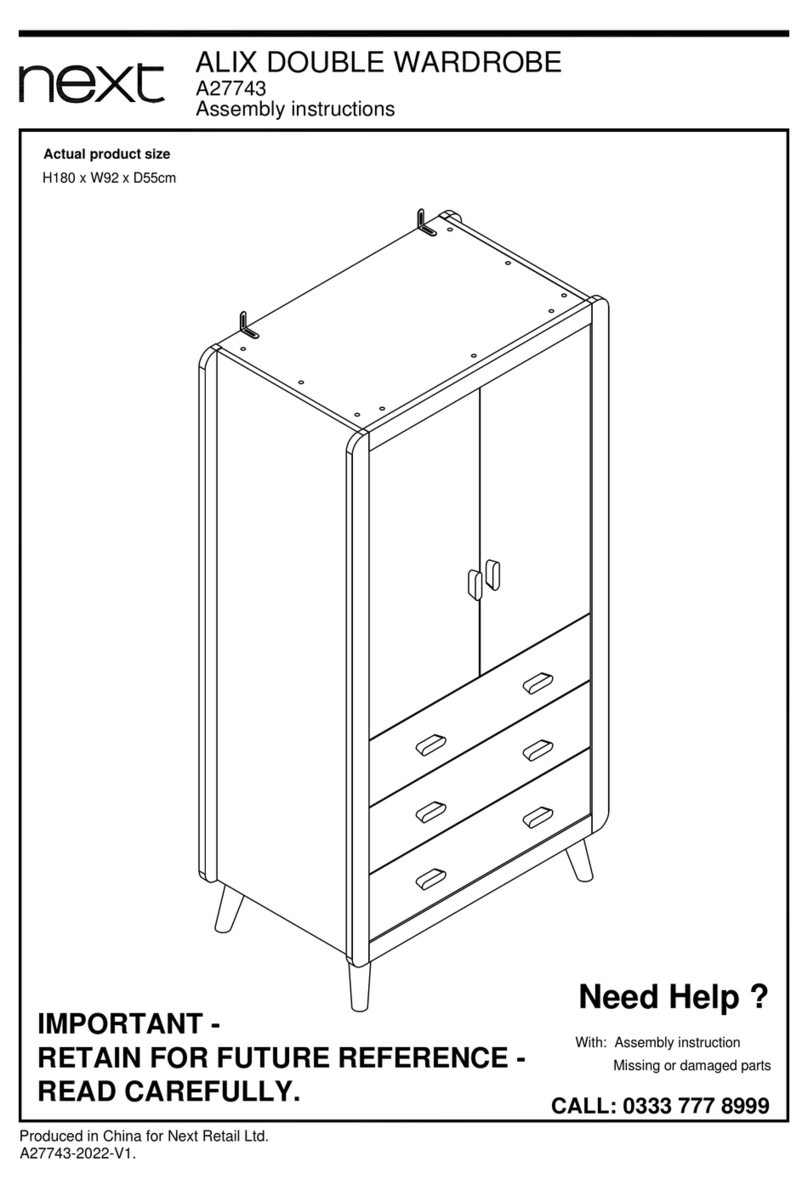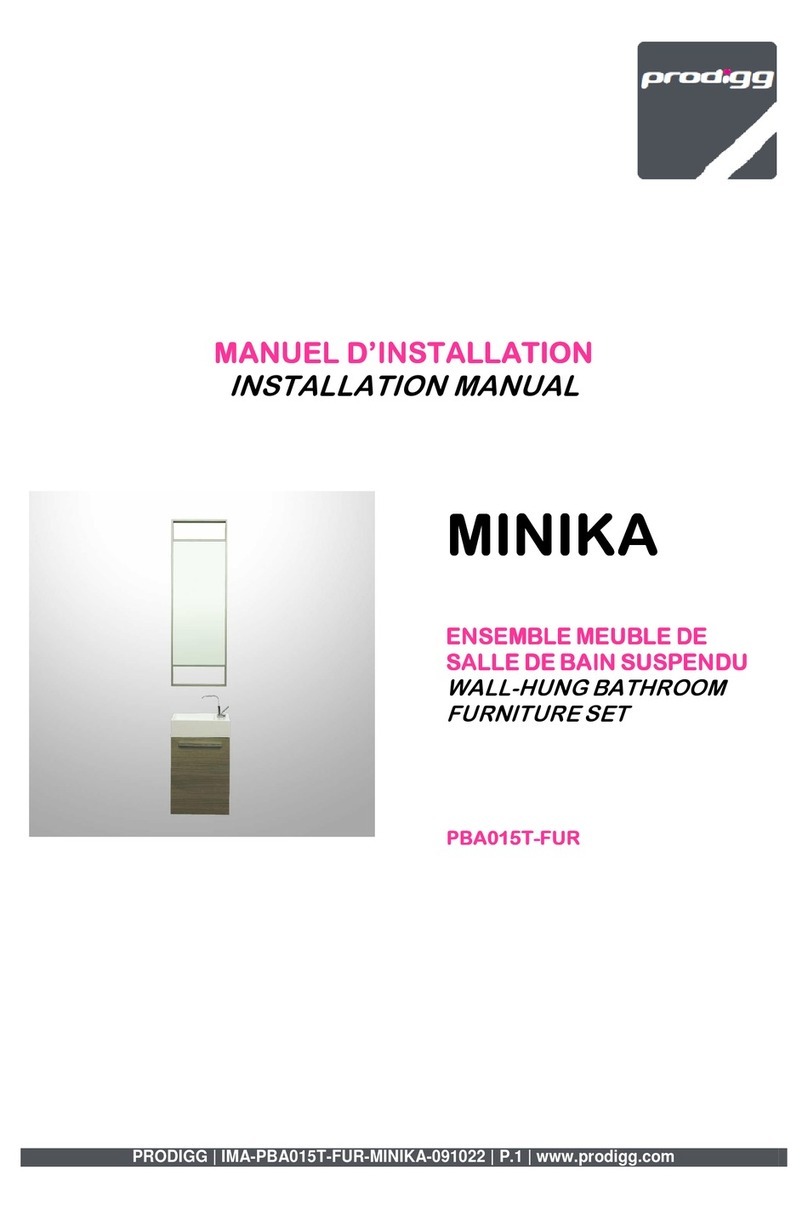
~ 8 ~
2.1.1 Indications
For children with restricted movement who no longer have spontaneous mobility, or young people and
adults with cognitive developmental disorders, for example it
An ergonomic sitting position is necessary in bed due to trunk instability
Secure contact between the feet and the floor is necessary when getting into/out of bed
The height of the bed must be adjustable so as to enable the patient to be transferred to a
wheelchair, for example
The height of the bed base must be adjustable for treatment purposes
2.1.2 Contraindications
None known
Always consult a doctor or therapist before using the bed.
2.2 Important information on operational safety
I. Setup and initial operation are performed by the sales agent. Prior to handing over the bed and
before each re-use, a functional check and a safety check must be performed. It must be ensured
that all functions are running smoothly, the power cable is routed correctly, and the bed base is
securely mounted in the bed frame. This also applies to any further operation of the children’s
therapeutic bed.
Incorrect routing of the power cable (e.g. kinks, shearing) may pose a serious risk to people
(electric shock).
II. The patient can weigh up to a maximum of 100kg. Persons of any age with reduced perception
are only permitted to use the system under supervision.
III. The lowest setting of the bed base is the safest and this is the only one that should be used,
unless another setting is required for therapy and treatment purposes.
Following therapy or treatment, always move the lifting unit down
to the lowest position.
IV. When adjusting the lifting unit, do not place any parts of the body
inside or underneath moving parts. There is a RISK OF CRUSHING.
V. The children’s therapeutic bed “LISA” is intended for use only in dry
rooms and must only be operated and stored in dry rooms. The
system must only be connected to a conventional 230-volt socket.
The cable and plug must be dry and must not be crushed or abraded
at any location. Make sure that all cables are routed and connected
correctly at the points provided.
VI. To prevent overloading and faults in the electric motors, a maximum switch-on time of two
minutes must not be exceeded.
The electric-powered adjustment of the head end and foot end must only be used to lift and lower the
upper body or legs (observe the position of the patient in the bed).
Overloading causes damage and is not permitted!
Overloading the mechanical components causes damage and is therefore not permitted. (see
operating instructions, item 2.3 and type plate)
VII. In the event of misuse, improper use, incorrect operation or incorrect assembly/repair, no
liability will be accepted In such cases, all warranties are also excluded.
